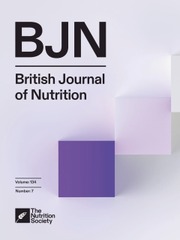No CrossRef data available.
Article contents
Accepted manuscript
Systematic organization of skinfold calipers: an approach based on physical-mechanical properties and characteristics
Published online by Cambridge University Press: 16 October 2025
Abstract
Core share and HTML view are not available for this content. However, as you have access to this content, a full PDF is available via the ‘Save PDF’ action button.
Skinfold calipers are used internationally in research, clinical, and field settings to assess body composition and nutritional status. Notably, currently available instruments differ in important specificities that impact measurement. In this sense, this report proposes a methodological approach that organizes skinfold calipers into three categories (Original, Generic, and Hybrid) and three configurations (Type A, Type B, and Type C) based on physical-mechanical properties and characteristics. Therefore, this concept provides technical support for choosing the most appropriate skinfold caliper in different contexts.
Information
- Type
- Review
- Information
- Copyright
- © The Author(s), 2025. Published by Cambridge University Press on behalf of The Nutrition Society

